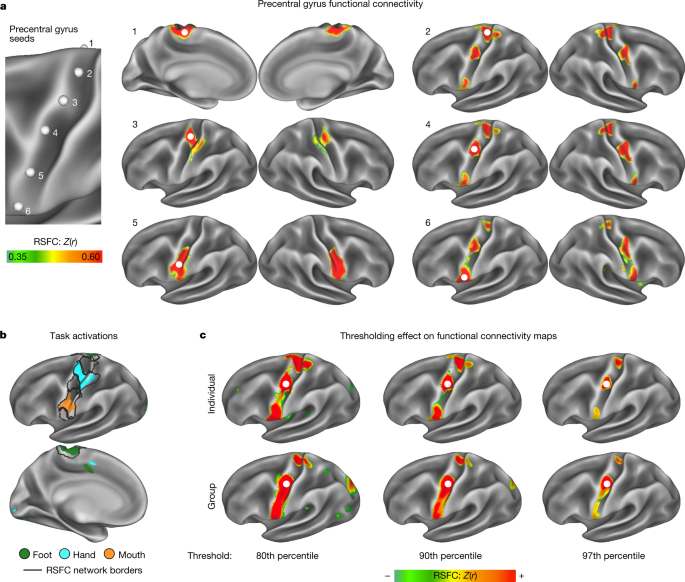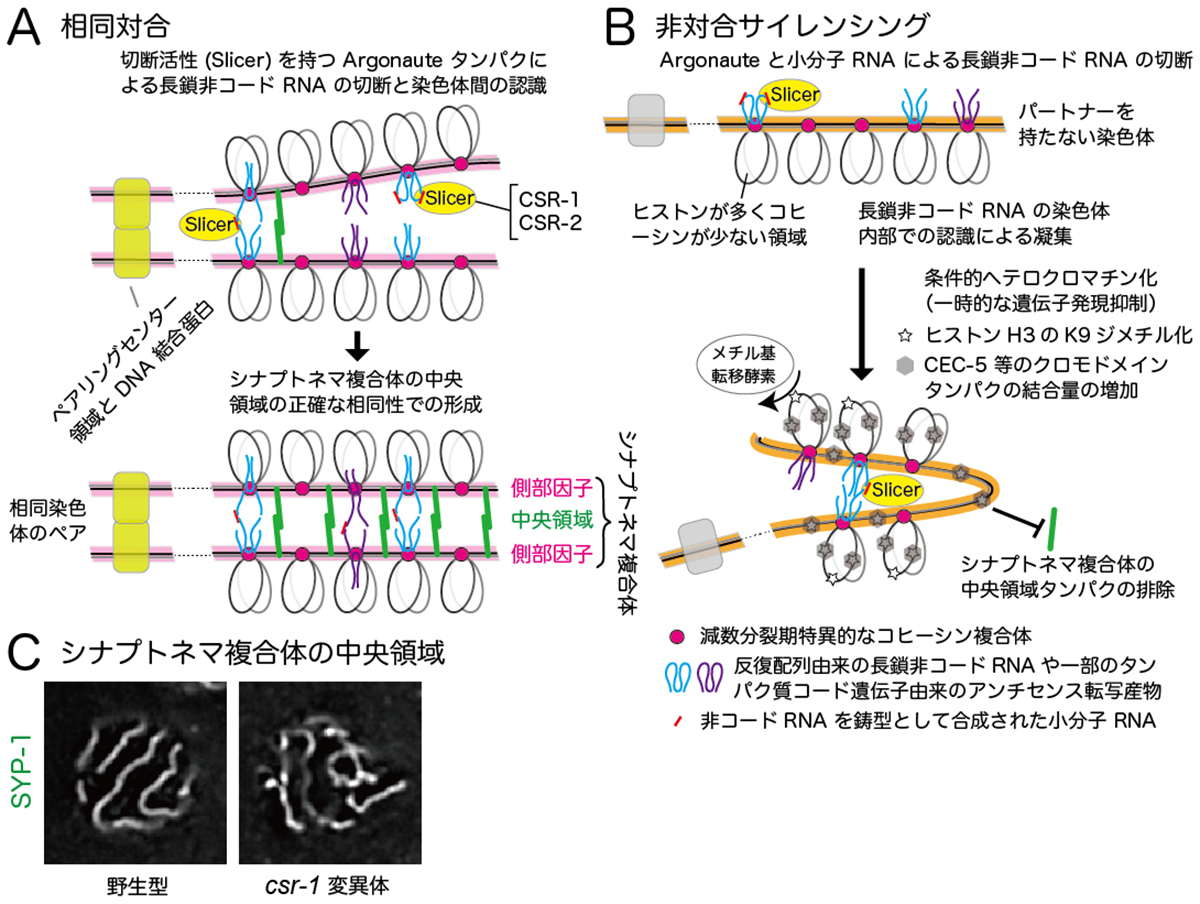計画、目的、生理学、行動、運動を統合する脳領域を指摘する研究結果 Findings point to brain areas that integrate planning, purpose, physiology, behavior, movement
2023-04-19 ワシントン大学セントルイス校
米国のワシントン大学医学部に所属する研究者たちによる新しい研究により、身体と心が密接に結びついているという考えは抽象的なものではなく、脳の構造においてもそのような結びつきがあることが示された。
筋肉運動を制御する脳の一部は、思考や計画を担当するネットワークと、血圧や心拍数などの自律神経系を制御するネットワークに接続されている。この研究成果は、脳の構造において身体と心がリンクしていることを示している。
<関連情報>
- https://source.wustl.edu/2023/04/mind-body-connection-is-built-into-brain-study-suggests/
- https://medicine.wustl.edu/news/mind-body-connection-is-built-into-brain-study-suggests/
- https://www.nature.com/articles/s41586-023-05964-2
運動皮質におけるエフェクター領域と交互に現れる身体認知的なアクションネットワーク A somato-cognitive action network alternates with effector regions in motor cortex
Evan M. Gordon,Roselyne J. Chauvin,Andrew N. Van,Aishwarya Rajesh,Ashley Nielsen,Dillan J. Newbold,Charles J. Lynch,Nicole A. Seider,Samuel R. Krimmel,Kristen M. Scheidter,Julia Monk,Ryland L. Miller,Athanasia Metoki,David F. Montez,Annie Zheng,Immanuel Elbau,Thomas Madison,Tomoyuki Nishino,Michael J. Myers,Sydney Kaplan,Carolina Badke D’Andrea,Damion V. Demeter,Matthew Feigelis,Julian S. B. Ramirez,Ting Xu,Deanna M. Barch,Christopher D. Smyser,Cynthia E. Rogers,Jan Zimmermann,Kelly N. Botteron,John R. Pruett,Jon T. Willie,Peter Brunner,Joshua S. Shimony,Benjamin P. Kay,Scott Marek,Scott A. Norris,Caterina Gratton,Chad M. Sylvester,Jonathan D. Power,Conor Liston,Deanna J. Greene,Jarod L. Roland,Steven E. Petersen,Marcus E. Raichle,Timothy O. Laumann,Damien A. Fair & Nico U. F. Dosenbach
Nature Published:19 April 2023
DOI:https://doi.org/10.1038/s41586-023-05964-2

Abstract
Motor cortex (M1) has been thought to form a continuous somatotopic homunculus extending down the precentral gyrus from foot to face representations1,2, despite evidence for concentric functional zones3 and maps of complex actions4. Here, using precision functional magnetic resonance imaging (fMRI) methods, we find that the classic homunculus is interrupted by regions with distinct connectivity, structure and function, alternating with effector-specific (foot, hand and mouth) areas. These inter-effector regions exhibit decreased cortical thickness and strong functional connectivity to each other, as well as to the cingulo-opercular network (CON), critical for action5 and physiological control6, arousal7, errors8 and pain9. This interdigitation of action control-linked and motor effector regions was verified in the three largest fMRI datasets. Macaque and pediatric (newborn, infant and child) precision fMRI suggested cross-species homologues and developmental precursors of the inter-effector system. A battery of motor and action fMRI tasks documented concentric effector somatotopies, separated by the CON-linked inter-effector regions. The inter-effectors lacked movement specificity and co-activated during action planning (coordination of hands and feet) and axial body movement (such as of the abdomen or eyebrows). These results, together with previous studies demonstrating stimulation-evoked complex actions4 and connectivity to internal organs10 such as the adrenal medulla, suggest that M1 is punctuated by a system for whole-body action planning, the somato-cognitive action network (SCAN). In M1, two parallel systems intertwine, forming an integrate–isolate pattern: effector-specific regions (foot, hand and mouth) for isolating fine motor control and the SCAN for integrating goals, physiology and body movement.

